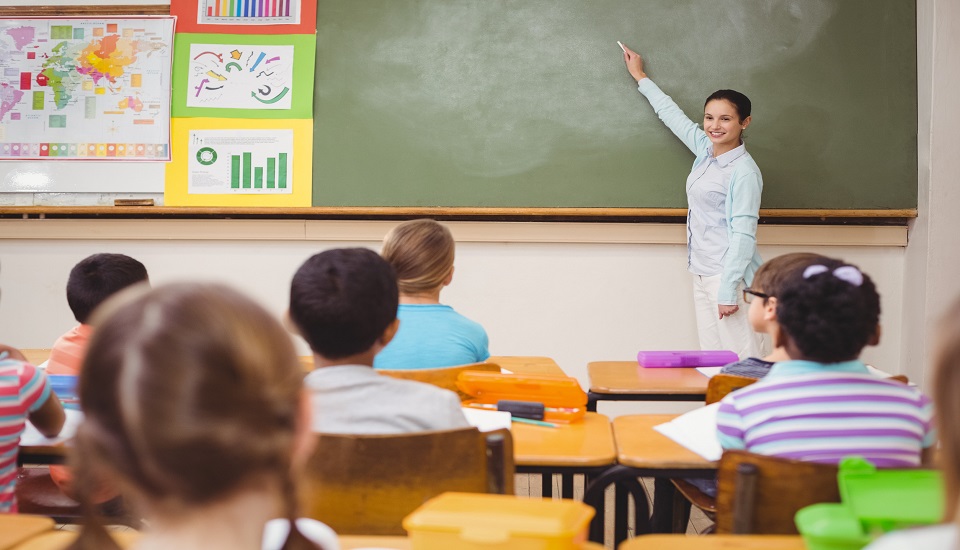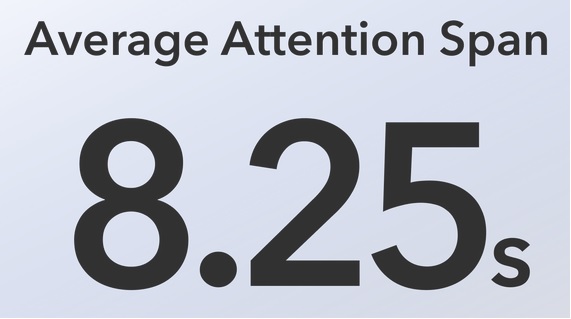Reviving Classroom Engagement: 5 Effective Strategies To Re-energize Students The Classroom
26th September 2023

As time passes by, especially after the pandemic, we are witnessing the attention span of today’s generation of students decreasing. According to crossrivertherapy.com, it’s been found that the average attention span of humans is 8.25 seconds, and in children's this even less.

Source: crossrivertherapy.com
Every school leader or educator is witnessing the downfall of the attention span of almost every student in the classroom. To improve this scenario, every school leader or educator needs to take actionable steps to make students energetic again for the classroom activities and bring their attention back into the classroom as well.
Before moving to the topic, can we ask you a question? Do you follow us on Social Media? We regularly share upgraded educational content, tips, feedback, and more. Check us out by clicking the profiles here - Facebook / Twitter / LinkedIn / Pinterest / Instagram / YouTube
In this blog post, we will be exploring various effective tips to re-energize the classroom participants, so that they can become more attentive in the whole classroom session.
So, without any further delay let’s get started.
Why Students Are Getting More Disconnected In The Classroom?
Many of the recent surveys have highlighted a concerning trend of declining student engagement. Even before the pandemic, there was evidence of a "school cliff" where student engagement declined as they progressed through their education. The pandemic further enhanced this issue, with surveys showing that a significant percentage of students felt less motivated than before. Unfortunately, engagement levels have not yet fully recovered.
5 Effective Strategies To Re-energize Your Class Students
Now, that we got an idea of why students feel more disconnected within the classroom, let's get to know some of the effective strategies to bring their attention back to the classroom by re-energizing them.
1. Embrace the Concept of "Withitness"
One important characteristic of teachers is their ability to stay connected with their students. This concept of "Withitness" refers to teacher’s awareness of what's happening in their classroom and their response to students' needs. By fostering this sense of connection educators can establish expectations for their students and provide timely support whenever issues arise.
2. Balance Level of Difficulty In Learning
It’s every educator's responsibility to maintain the balance of the difficulty of learning materials and the abilities of every student. If the learning material difficulty is too easy then students feel boredom, on the other hand, if students feel the learning materials is difficult to comprehend then they feel frustrated.
According to Cognitive Load Theory, educators should aim for a spot by tailoring their teaching approach to challenge students appropriately. This ensures that students experience both achievement and progress during their learning journey.
3. Fostering Culture Of Collaboration
Engaging students in the classroom requires creating opportunities for them to actively participate in lessons. Collaborative learning, when implemented purposefully and with teacher monitoring, can yield numerous benefits. It promotes higher-order thinking skills, boosts self-confidence, fosters friendships, and develops social skills. Through purposeful connection and collaboration, teachers can better engage students in the learning process.
4. Make Students More Involved
Incorporating student feedback and involving them actively in their learning can be highly effective strategies for boosting engagement levels. Students often respond well to activities and appreciate having the freedom to choose their learning experiences. Educators can utilize polls to gather feedback on what works for their students granting them a greater say in shaping their educational journey. Encouraging self-reflection and self-assessment also empowers students to take charge of their progress.
5. Integrating Technology into Education
Technology has become a part of education with its significance further amplified by the pandemic. Educators have realized the potential of tools such as portals, video tutorials, personalized learning platforms, and gamification. These tools could increase engagement by offering visibility, support, and interactive elements within the learning process. When technology is utilized appropriately, it deepens student’s connection with their studies and enhances engagement as well.
Rebuilding Engagement and Attention Of Students Takes Time
For every school's success, student engagement within the classroom is one of the critical aspects. However, after the pandemic, the attention span of students decreasing day by day which makes the the job of every school leader and educator very difficult.
Moreover, those school leaders or educators who have pursued courses like Online Educational Administration & Management courses are aware of this situation and know how to bring back the attention of students in the classroom and how to re-energize them for classroom activities.
While there’s no magic solution to re-energize all the disconnected learners in the classroom applying all the above-mentioned strategies and with consistent effort, every school leader and educator can be able to re-energize their classroom participants by establishing meaningful learning experiences for their students.
We believe education should be accessible for everyone. That’s why we don’t charge for our blogs. Find the right course for you and try out the course. WhatsApp us at: 1800–212–6400. You can also mail us at act@asiancollegeofteachers.com.
Written By : Abhishek











